For centuries people dreamed of taking flight. Watching the birds soaring through the air seemed to offer the freedom to explore life from a new perspective. While the invention of hot air balloons and gliders allowed glimpses into this new world, it was powered flight that would forever change the way that humans travel. During an excursion along Route 66, we made a stop in Weatherford, Oklahoma. Who would imagine that this town of 10,000 would be home to an impressive air travel museum? Being eager to learn how it ended up here, we stopped in and discovered 6 reasons to visit the Stafford Air & Space Museum.
We want to thank the Stafford Air & Space Museum for hosting our visit. Rest assured all opinions are our own.
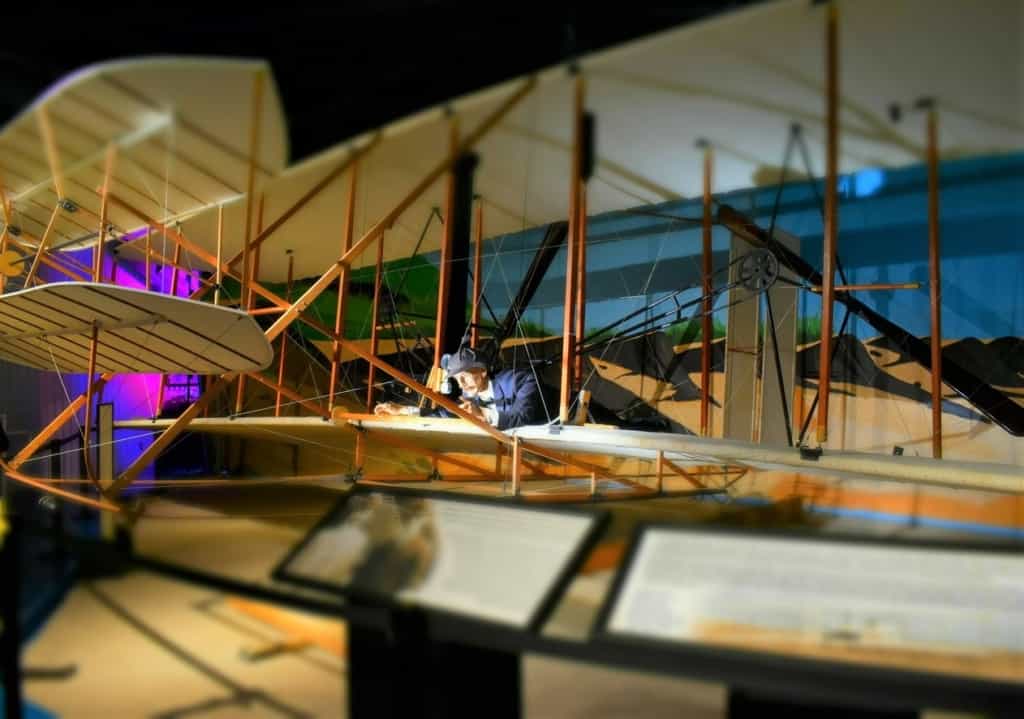
Aviation History
We have all seen the old movie clips of the various flying contraptions that failed to launch. Many people worked singularly to solve the riddle of manned flight. It took collaboration to finally achieve the momentous victory at Kitty Hawk. The Wright Brothers were deliberate in their approach, learning important lessons from their unsuccessful predecessors. During a visit to Chanute, Kansas we learned that they even had assistance from a bridge designer. This led to their ultimate victory in achieving sustained flight. The Stafford Air Museum offers a variety of aircraft that walk guests through the timeline of development.
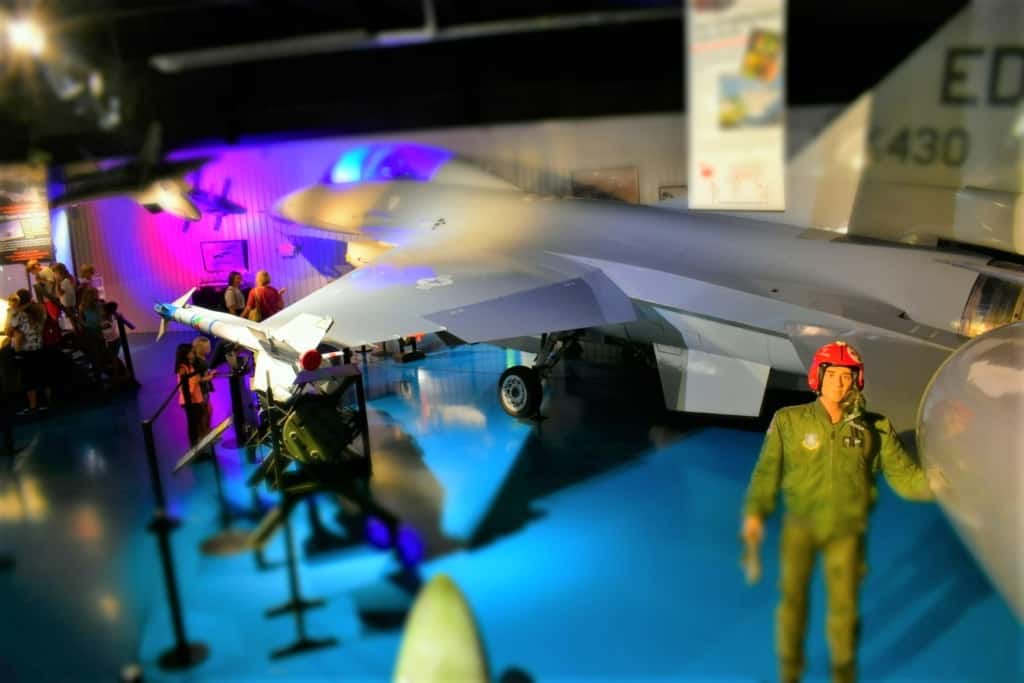
Rapid Advancements
While combustion engines allowed man to soar, it would be the invention of jet engines that got us moving. Without tremendous amounts of thrust, we would always be limited. As far back as Sir Isaac Newton’s day, there was a belief that you could propel forward by a rear-facing explosion. More unsuccessful attempts happened in this arena, mostly due to the lack of power supplied by coal. It took until 1942 for the first American jet engine to be developed. The addition of pressurized cabins allowed for loftier flights.
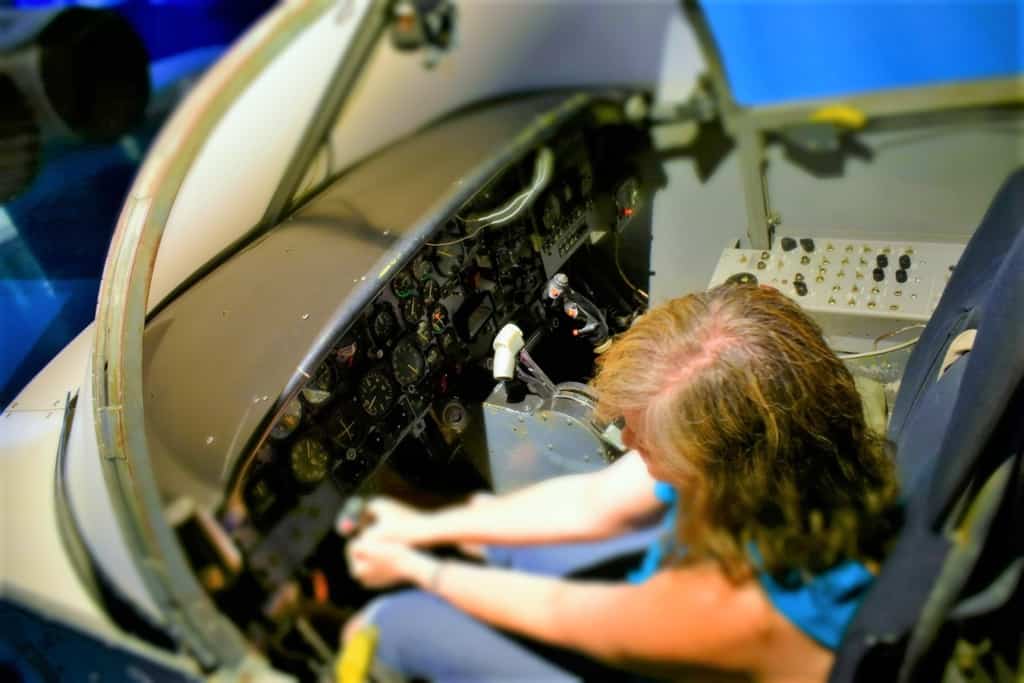
Hands-On Displays
High on our list of 6 reasons to visit the Stafford Air & Space Museum are all of their interactive exhibits. When was the last time that you got to climb into the cockpit of a jet fighter? Crystal didn’t hesitate to take her turn at the joystick and pictured herself cruising through the atmosphere.
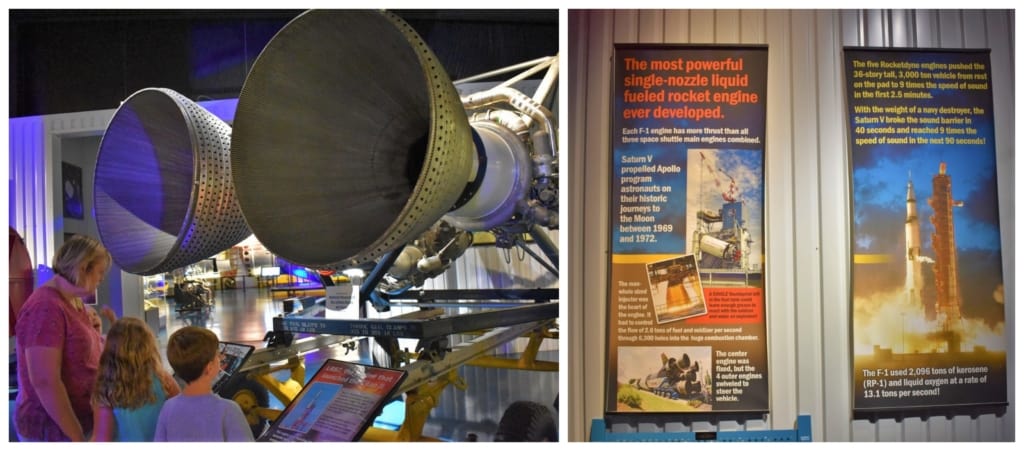
Rockets
While jets certainly changed the way humans travel, we were still limited to our planet. This was not enough for some who had dreams of traveling into space. We can imagine the delight found by earlier generations when they would watch fireworks shoot into the sky. This rapid explosion of power was developed by the Chinese, who harnessed the use of gunpowder. The idea of space exploration, utilizing rocket power, was proposed in 1898 by a Russian schoolteacher. While solid propellants were effective for shorter bursts, the use of liquid fuels would soon become recognized. During World War II, Germany’s V-2 Rocket stunned the scientific world. After the war, Allied countries would begin the “Space Race” to see who would be first to explore the outer regions.
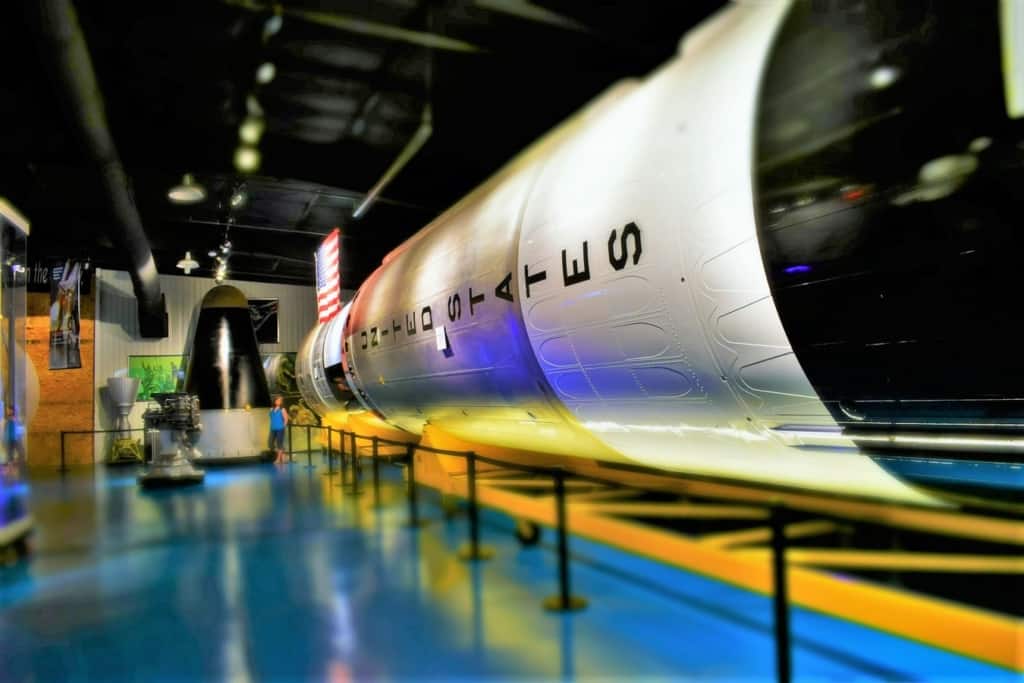
Unbelievable Size
Exploring the museum offered us some exhibits that were unbelievable in size. To stumble upon a Titan II Rocket inside was certainly unexpected. We had seen a variety of rockets during a visit to the Strategic Air Command Museum, but they were all outdoors. These launch vehicles are usually associated with intercontinental ballistic missiles but have served another purpose. The 1960s were the height of the “Space Race” and both Russia and the United States both saw advancements. By the middle of the decade, astronauts had already performed spacewalks. The race was on to see who would be the first to walk on the moon, which would occur before the decade ended. The Titan rockets helped pave the way for the creation of the Saturn series that would take Apollo 11 to the moon.
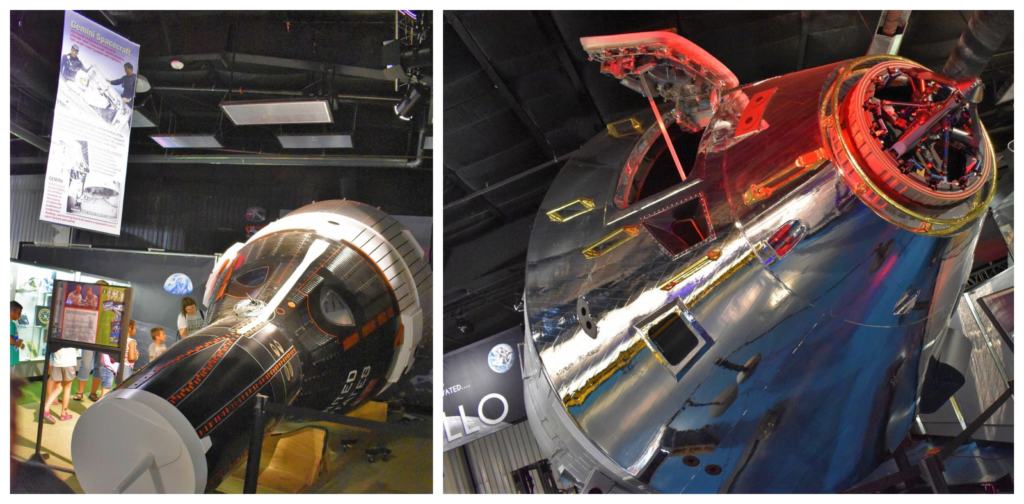
Space Capsules
Landing on the moon may have been the end game, but it took a series of steps to accomplish this feat. One of the 6 reasons to visit the Stafford Air & Space Museum is the chance to see space capsules up close. While Russia dealt with its tests, the U.S. was advancing through a rapid change in designs. Each new generation of space capsules was designed to accomplish a specific set of goals. The Gemini models (pictured on left above) were used to make the first orbits of the earth. During the Gemini 6 flight, Thomas Stafford made his first journey into space.
Stafford would take part in the Apollo 10 mission that orbited the moon 31 times. This trip paved the way for the Apollo 11 mission two months later. During the Apollo 10 trip, the astronauts on board traveled farther away from earth than anyone had ever accomplished. During the trip, Stafford piloted the Lunar Module during orbit and successfully docked with the Command Module (pictured on right above). During the return trip, the capsule achieved a speed of nearly 24,800 mph, which is the record for human travel.
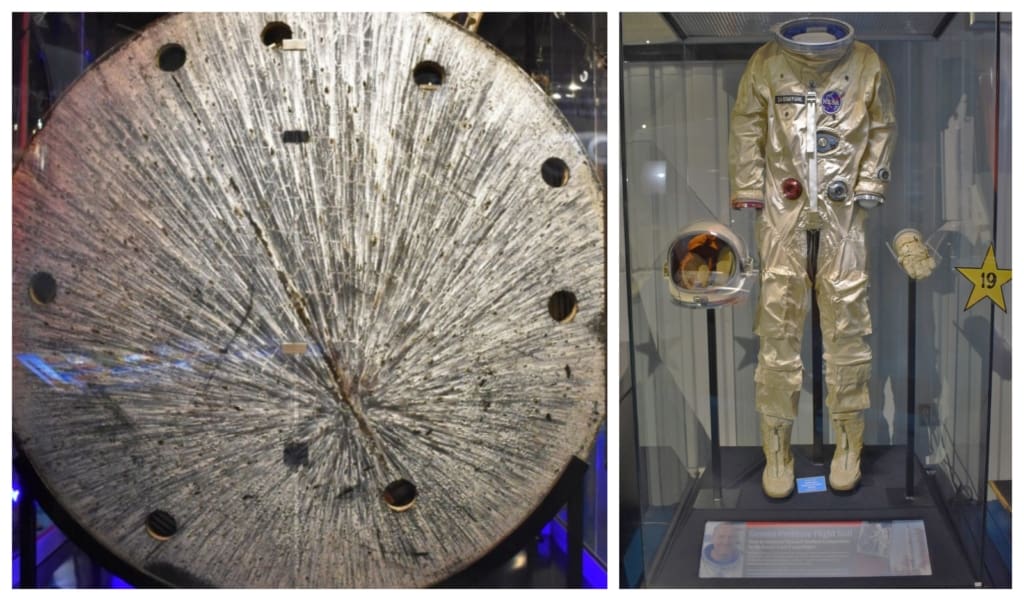
Space Artifacts
We can only imagine the nerves of steel required to experience reentry through the atmosphere. We can remember watching the television, as they showed the effect of friction during this dangerous portion of the journey. The fireball that was created brought with it temperatures of nearly 5000 degrees. Seeing the effects that this event had on the heat shield brought the danger home for us. While the astronauts were fitted with space suits, nothing would save them if this shield failed.
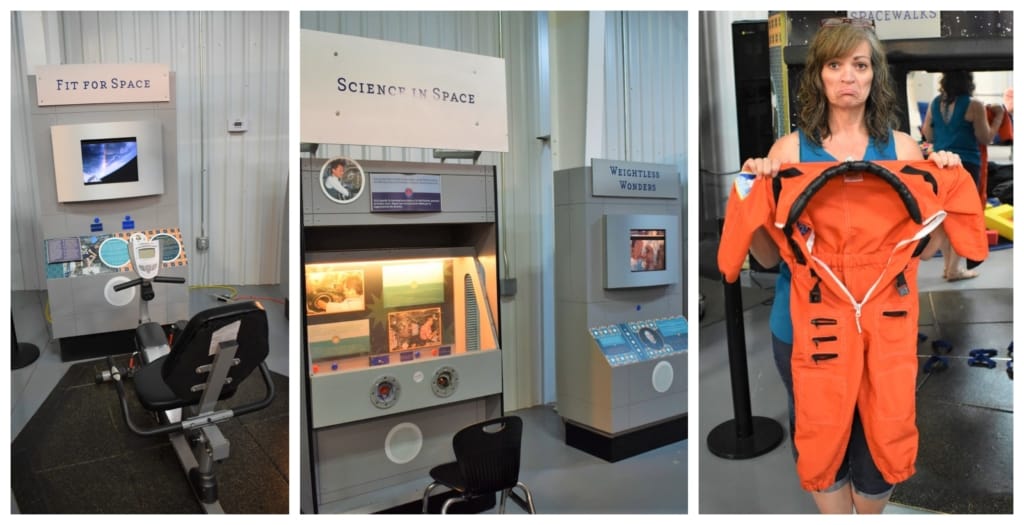
Kid Zone
All of these amazing exhibits had us wondering how we would have handled space travel. The museum offers visitors a chance to explore this idea. A variety of stations allow guests to challenge their motor skills. While some of the displays are designed specifically for the younger set, (Sorry Crystal, that spacesuit won’t fit.) other exhibits can be enjoyed by all ages. This is the perfect way to wrap up a visit to the museum and inspire the next generation to aim for the stars. Make plans to see if you can discover more than 6 reasons to visit the Stafford Air & Space Museum. We would love to hear what you would add to our list.


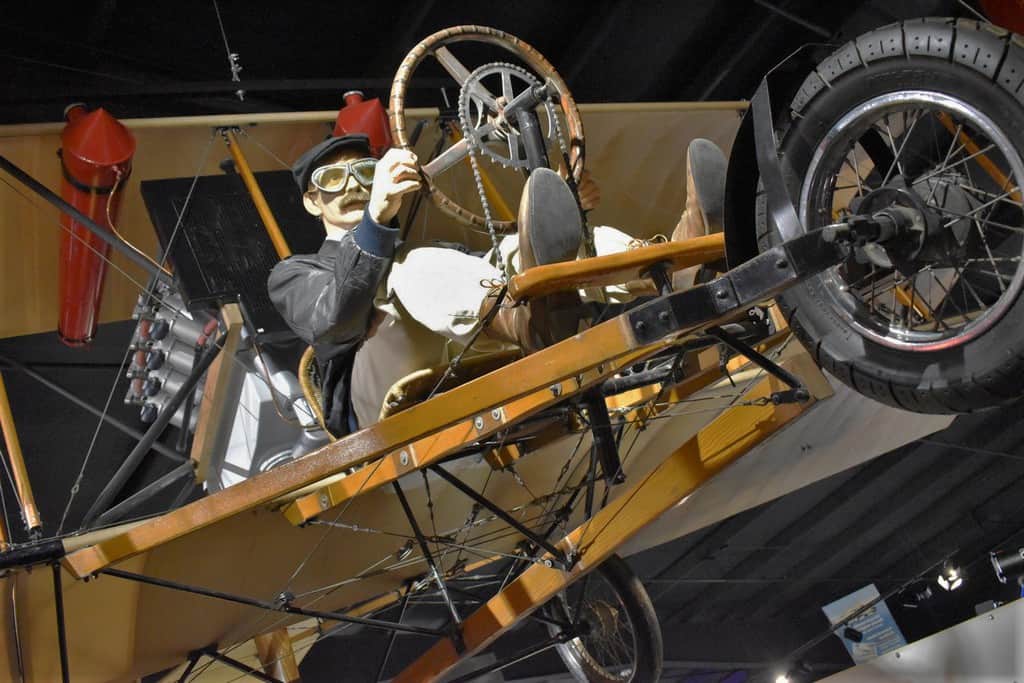

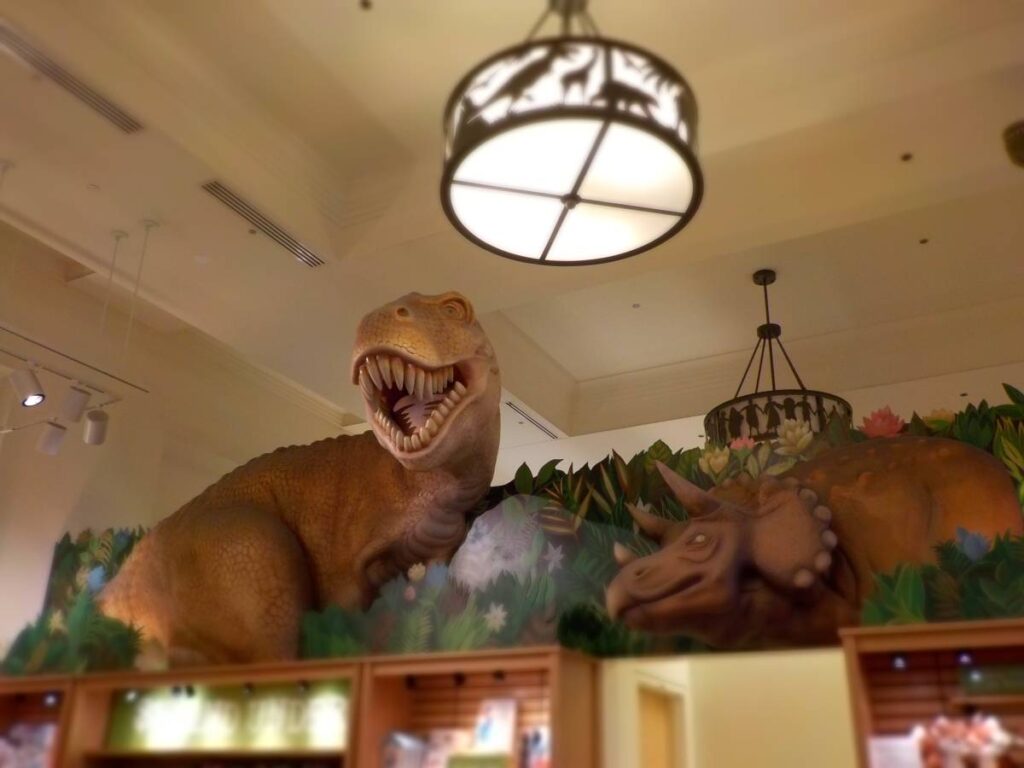

What a great reason to visit Oklahoma! The Stafford Air & Space Museum looks like a fascinating place to explore.
It’s just one of the unique surprises you will find in Oklahoma.
I would have never thought such a complete air and space museum exists in an Oklahoma town. Was Stafford born there?
Yes, he was. Being his hometown made it an obvious choice for the museum.
WOw, this is quite impressive to explore, thanks for sharing the highlights.
We hope you have a chance to see it in person.
I always enjoy visiting an air/space museum. Sounds like Stafford Air & Space Museum is a winner. I’d most like to explore the Space Capsules section. Someday.
We hope you get to make it there. You’d find plenty to keep you occupied.
The Stafford Air and Space Museum looks like it would be a fun place to learn about space flight especially. Your photos bring to mind a museum called Aviodrome here in the Netherlands, which also covers the whole history of flight starting at Leonardo Da Vinci’s designs. It’s much less impressive in its space flight section though that the Stafford one. How does this one compare to the Air and Space Museum in Washington, DC?
We have never visited the museum in Washington, so we are unable to offer a comparison. I would hazard a guess that the Stafford Museum pales to its national brother.
Oklahoma is loaded with such wonderful places to discover like this one. Super interesting. Hope we get to visit one day.
We hope you do, as well. It’s a great state to explore.